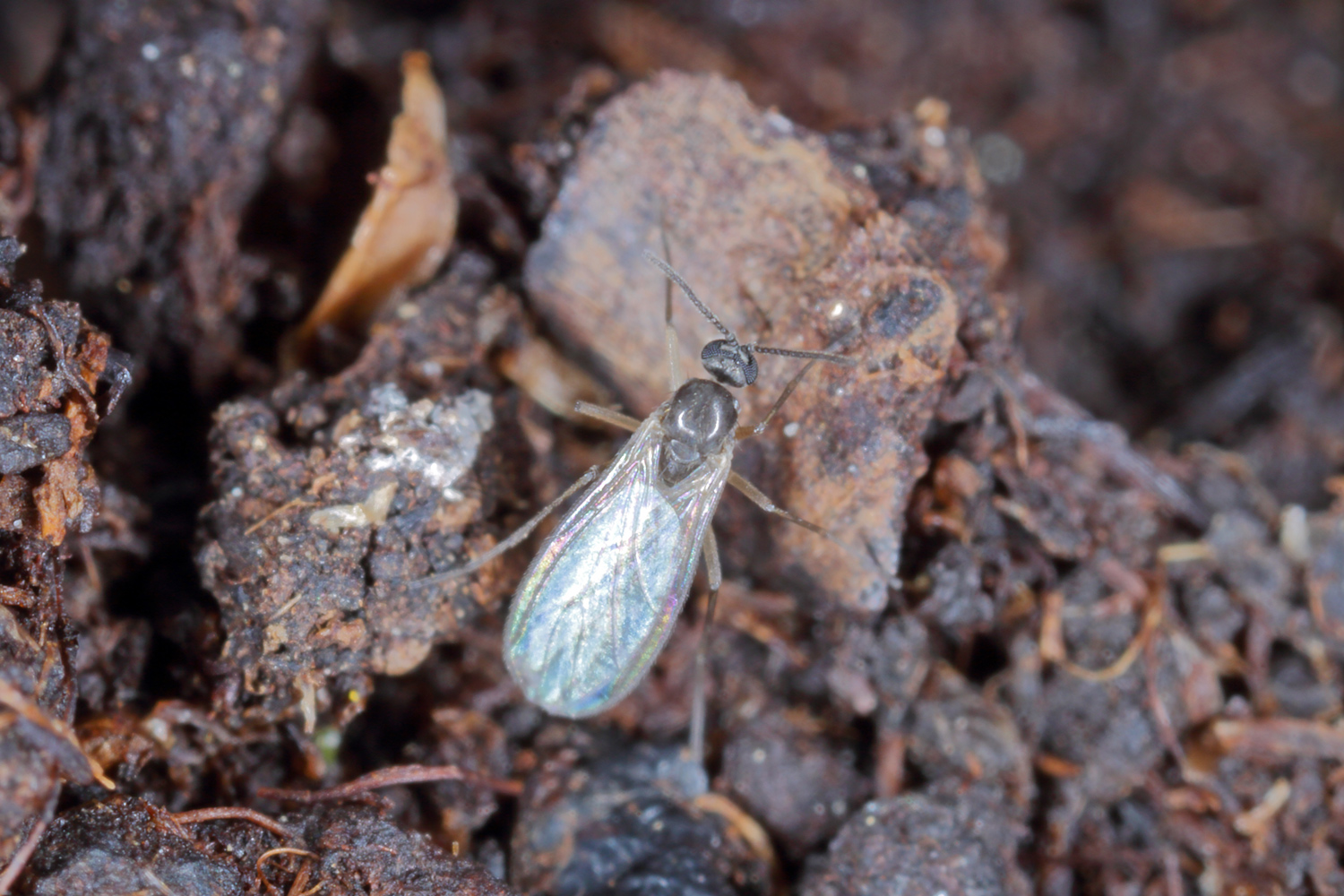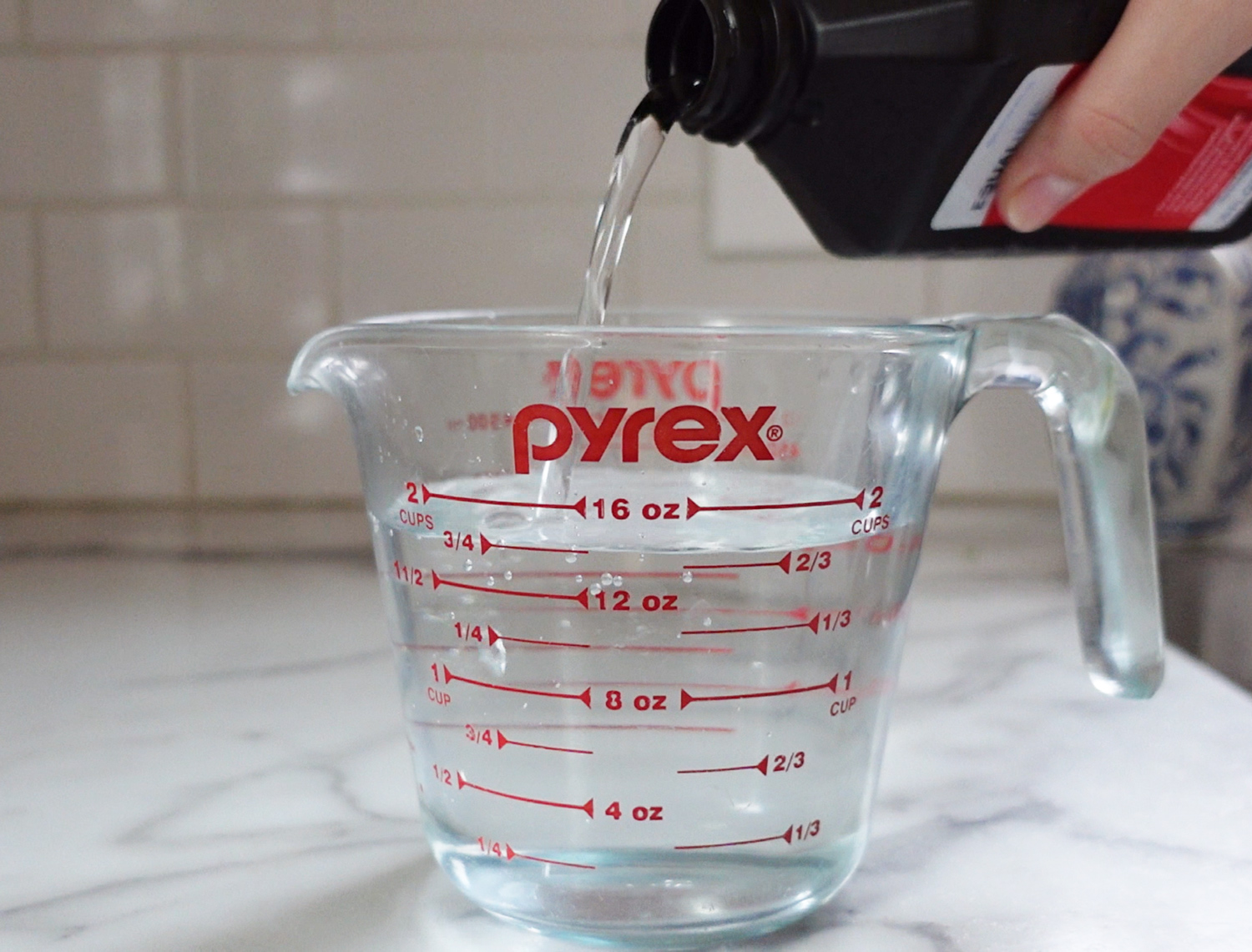An Organic Solution for Fungus Gnats
If you have houseplants or grow indoor bulbs like amaryllis, you may have some experience with fungus gnats. Sometimes called root gnats, these small flying insects seem to appear out of nowhere. And if you take action, a small infestation can become a booming population almost overnight. Fungus gnats are attracted to light and you may first notice them at night, flying around lamps or even illuminated electronic devices. However, it’s not the light they need to survive. Fungus gnats live and reproduce in moist potting soil, and that's where the problem lies.
Fortunately, there’s an easy organic control that can rid your home of these pesky insects. If you also take a minute to learn about the fungus gnat's life cycle, you can avoid their return.

What to Know About Fungus Gnats
Fungus gnats are small, dark-bodied flying insects about 1/8 inch in length. Their life cycle includes four developmental stages – egg, larva, pupa, and adult. Adult females lay their eggs into moist soil and the larvae emerge four to six days later. The larvae have translucent bodies and dark heads. They live in the soil for approximately 2 weeks, feeding on fungi, decaying plant matter, and plant roots. Then the larvae pupate and emerge three to six days later as flying adults. Adult fungus gnats live for one week, and during this time the females can lay up to 200 eggs. Since the entire life cycle is completed in 3-4 weeks, overlapping generations eventually magnify the problem.
A small population of fungus gnats rarely does significant damage, but in large numbers they can be a serious problem. Potted plants that are suffering from a severe fungus gnat infestation can show signs of wilting, loss of vigor, poor growth, and yellowing.

How to Avoid a Fungus Gnat Outbreak
Prevention is always the best way to control fungus gnats. Here are five ways to make it difficult for them to get established.
- Avoid overwatering and allow the planting medium to dry between waterings. Wet soil is like a welcome mat for fungus gnats, so take care to always let at least the top 1-2 inches of soil dry between waterings.
- Always use new, high-quality potting soil. When planting bulbs or houseplants, don't re-use old soil or use soil from outdoors. Avoid the use of cocoa coir and straight peat moss as these mediums hold moisture and are prime breeding ground for fungus gnats.
- Provide good drainage. Some decorative pots don't have drainage holes in the bottom. This makes it difficult to control moisture levels and the soil can easily become waterlogged. Instead, grow your plants in plastic pots that have drainage holes. Then you can arrange those pots in the decorative planter. When it's time to water, remove the pots and allow them to drain before returning them to the decorative container.
- Clean out clogged drains and eliminate leaks. The key to solving a fungus gnat infestation is to stop these pests from reproducing. Be sure there are no areas in or around your home where moisture and organic matter could provide breeding grounds.
- Purchase healthy plants from reputable nurseries. When you bring a new plant or bulb into your home, take a minute to inspect both the plant and the soil for any sign of pests. Then, keep an eye out for fungus gnats, especially during the first couple of weeks.

How to End a Fungus Gnat Outbreak
Even if you follow these steps perfectly, fungus gnats can still find a way to gain a foothold. If this happens, circle back on the prevention steps listed above, and then begin the following treatment regimen to break their life cycle.
- Control fungus gnat larvae with hydrogen peroxide OR neem oil. Begin watering your plants with a solution of hydrogen peroxide and water. Mix one part hydrogen peroxide (over-the-counter 3% hydrogen peroxide) to three parts water. Continue to use this hydrogen peroxide/water solution in place of regular water until the situation is completely under control. Depending on the level of infestation, this can take a few waterings/weeks. Hydrogen peroxide will kill the fungus gnat larvae and most soil fungi. It also oxygenates the planting medium. To ensure this remedy is effective, use a new bottle of hydrogen peroxide rather than one that's been sitting on a shelf. Another option is to use neem oil. Administer a light soil drench with neem oil at a rate of one and a half teaspoons to one quart of water (or the manufacturer’s direction on the label), watering at the base of the plant stems. Repeat every 7-10 days until the situation is rectified.
- Control adult fungus gnats with yellow sticky traps. Insert yellow sticky traps into the soil where you think the fungus gnats are breeding. Adult flies will be attracted to the yellow color and get stuck on the adhesive. Sticky traps are also useful for monitoring current or future problems. Yellow sticky traps are available here: https://amzn.to/3r7yHqb
By combining preventative strategies and these simple organic controls, you can get back to doing what you really love: growing and enjoying plants. Watch this video to learn more: Control Fungus Gnats on Amaryllis Effectively and Easily
